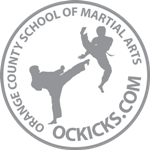
The modern Pyong Ahn forms were introduced as a series of five forms in 1901 by Itosu Yasutsune (1831 – 1915), a Shorin-ryu Karate master on Okinawa. The words Pyong Ahn translate to "Peaceful Confidence". The diagrams of the forms resemble a balanced scale. There is some differing opinions as to the exact history of the forms. Some claim that they originated in China and exemplify the southern regional style (Nam-Pa); that they were created by a Chinese military leader named Jeh Nam and were once known as the Jeh Nam Hyungs till late 1800. Others would argue that they originated in Okinawa and were adapted by Itosu from older forms such as Kusanku and Gojushiho into forms suitable for teaching karate to young students and introducing martial arts practice into school systems.
The exact history behind the origin of the Pyung Ahn series aside, there is great benefit to practicing these forms. These forms were introduced into the Tang Soo Do curriculum by Hwang Kee, who made the turtle the symbol of the Pyung-Ahn Hyungs. The turtle bears a special significance in Korea culture comparable to that of the dragon in China. Throughout Korea, in gardens and temples especially, one sees turtle sculptures dating from historical times to the present.
In his book Tang Soo Do (Soo Bahk Do), Hwang Kee states (page 350):
"The practitioner cannot remember only the order of the form. It is more important for him to concentrate on balance, rhythm, breathing control, variation in speed and power control. It is vital to pay attention to these things so that the form is presented as an approach to a living ideal."
When practicing these Hyung it is natural to find defensive applications in the movements. Continuous practice of the forms develops confidence to performing the movements properly and by extension be more effective applying them defensively. Understanding these applications, how and when to apply them, cultivates wisdom in the student. This development of body and spirit occurs naturally. Having developed confidence and wisdom the student will feel at ease, at peace, in mind and body regardless of the situation. This is the feeling of Peaceful Confidence and the reason behind the name for the series of forms. The Pyung Ahn Hyung's ideal is equanimity and peace.
In Hwang Kee’s book we find the following passage on page 372:
Hwang Kee (1978). Tang Soo Do (Soo Bahk Do). United States: Sang Moo Sa.
http://www.sfts.edu/faculty/noel/taekwondo/korean.asp
http://blog.wasatchmartialarts.com/pyung-ahn-hyung/259
http://en.wikipedia.org/wiki/Pinan




 RSS Feed
RSS Feed
